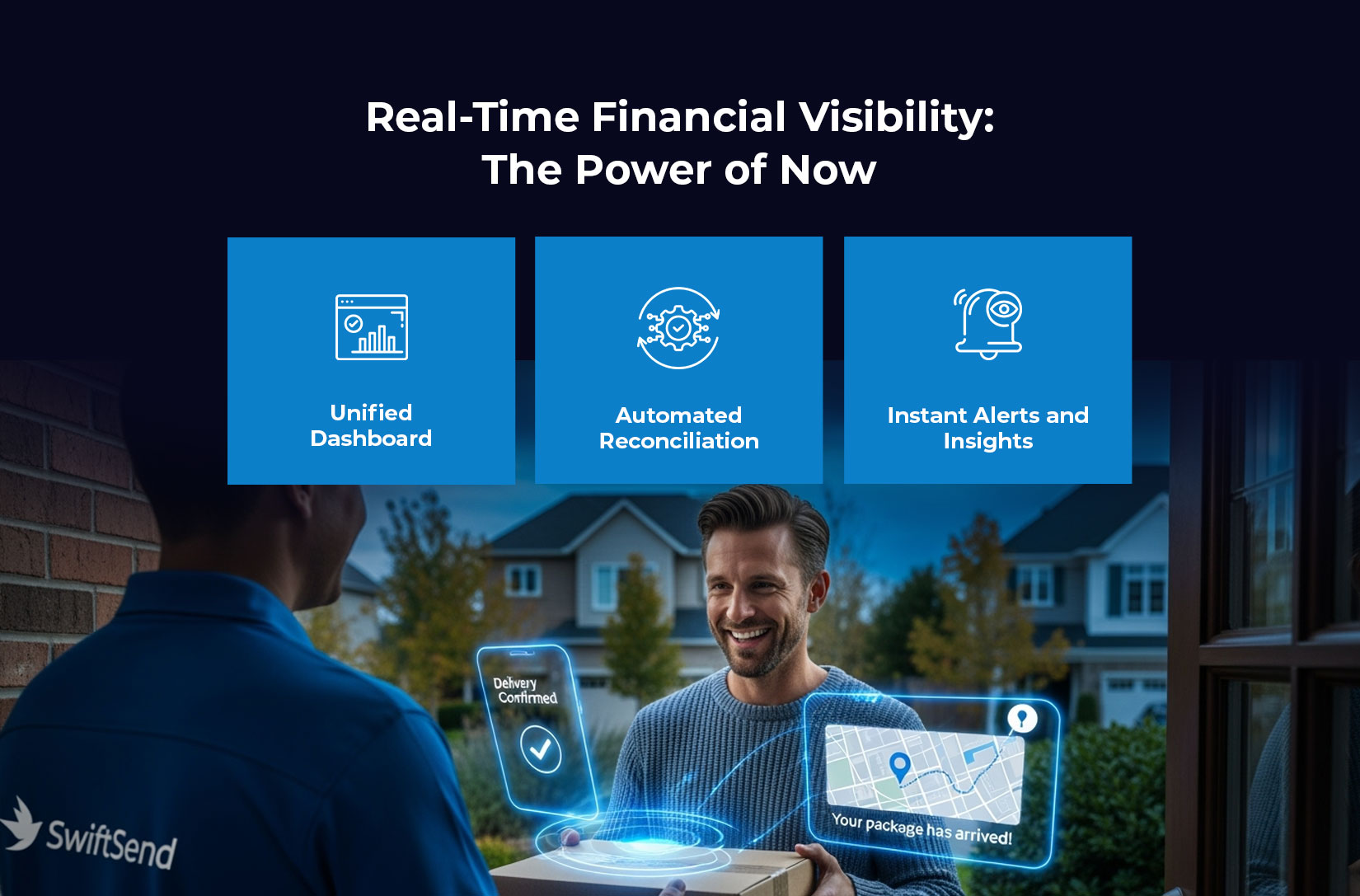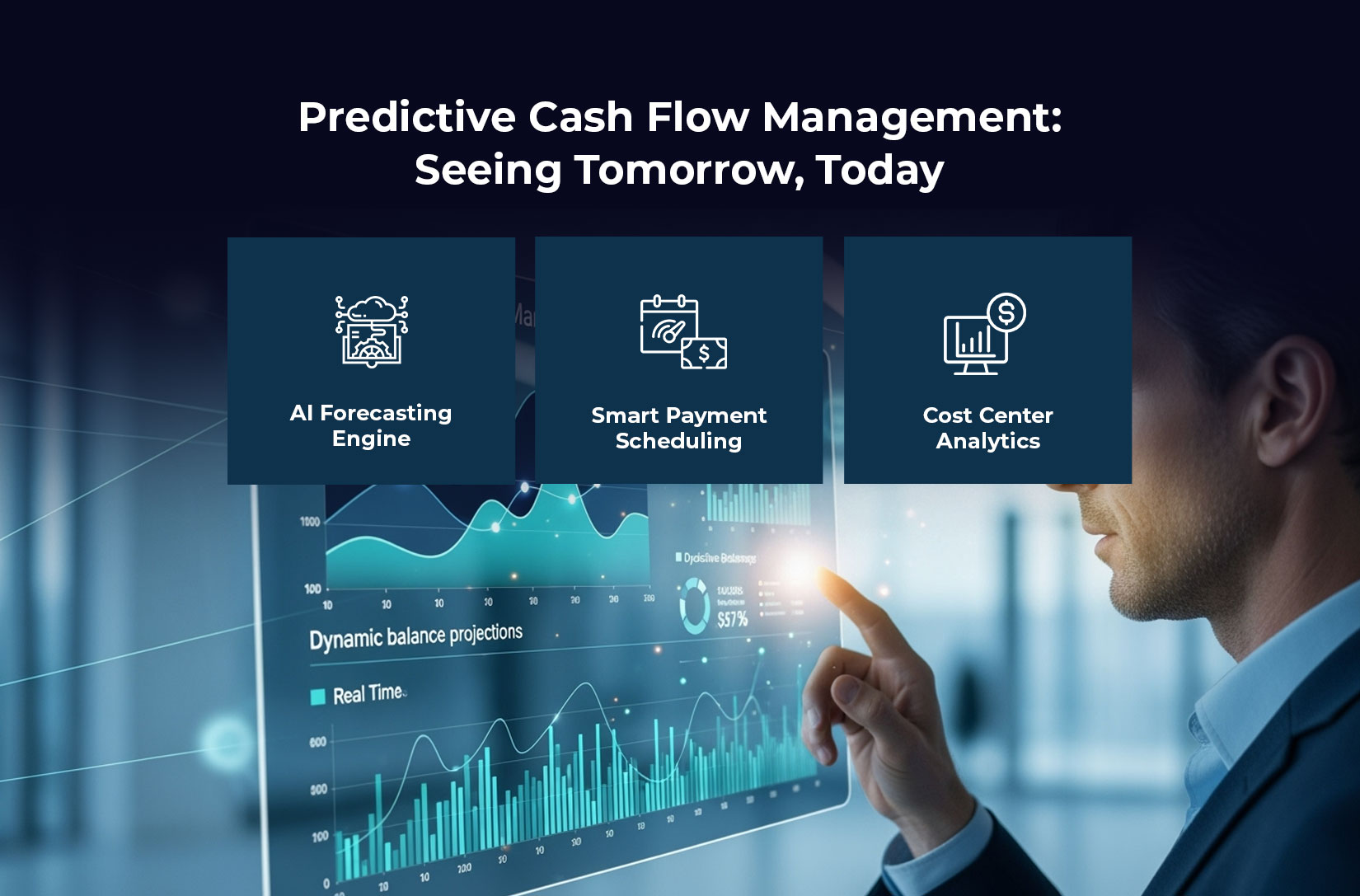
From Delayed to Decisive: Predict and Plan your Next Move with Real-Time Financial Insights
In logistics, each delivery signifies a unique journey – but along with any delivery comes another essential journey. The journey of money. For Quick Service Restaurants (QSRs), Retail brands, and Courier-Express-Parcel (CEP) companies, delivery management software is no longer about just getting parcels from A to B. It’s about ensuring that cash flows as easily and consistently as goods do. In an industry with tight margins, where timing is critical, cash flow transparency can be the difference between scaling smoothly or running into financial roadblocks.
Businesses can no longer afford to wait days or weeks to find out where the money disappeared. Manual reconciliations, delayed settlements, and opaque payment cycles belong to an era during the slower world of logistics and finance. Enter LogiNext’s Delivery Management Software (DMS), a system created to move goods faster, but evolve the ability to move money smarter. Surrounding it all is LogiNext Payments, a premier capability that connects operational performance with real-time finance performance.
Let’s break down how LogiNext’s real-time visibility into finance and predicted cash flow represents a shift in how brands plan, anticipate, manage, and thrive.
Real-Time Financial Visibility: The Power of Now

Previously, financial visibility meant receiving monthly reports, and as a result, working off of guesswork spreadsheets. With LogiNext’s delivery management software, businesses now easily have a single, instant view of every rupee or dollar in motion across the entire organization.
1. Unified Dashboard:
The platform provides a single view of all collections and payouts, whether digital, card, or cash-on-delivery (CoD). Thereby, eliminating the need to toggle between systems or wait on lump sum, third-party reports.
2. Automated Reconciliation:
Manually tracking CoD (to cash) or online payments? That is a thing of the past. With LogiNext payments, the reconciliation process is automated, meaning every order and payment is fully reconciled. Thus, taking the burden off finance teams who would typically spend hours to verify CoDs.
3. Instant Alerts & Insights:
The system automatically flags any payment delays, mismatches, or discrepancies, allowing teams to act in a timely manner. That means shortened payment settlements, reduced time to resolution, and zero surprises at the end of the day.
McKinsey said organizations that use real-time financial data can gain a reporting advantage, resulting in a 20 percent improvement in operational cash flow. The jump from transparency to agility is clearly in motion.
Predictive Cash Flow Management: Seeing Tomorrow, Today

While real-time visibility allows you to see where your money is located, predictive cash flow indicates what it is going to do.
LogiNext’s DMS utilizes AI-backed forecasting models. With this it helps businesses predict daily and weekly inbound and outbound cash flow at an unparalleled accuracy.
1. AI Forecasting Engine:
By examining delivery volumes, payment methods, and seasonal demand patterns LogiNext Payments can predict cash flow trends. This helps better-educated financial leaders when determining next steps or allocating cash and resources.
2. Smart Payment Scheduling:
The LogiNext Payments engine will intelligently assess which payments should be executed first. It is based on urgencies of payment, historic performance, or contract timelines.
3. Cost Center Analytics:
Enhanced analytic modeling highlights where revenue leaks, overpayments, and inefficiencies across routes and carriers or business units are located thus providing visibility to where every dollar is going.
By integrating logistics operations with financial forecasting, you can drive more empowered decision making instead of simply engaging in reactive fire-fighting mode.
According to Deloitte, companies that utilize predictive financial models reported decreasing uncertainties by 30%. Thus, leading to more consistent revenue cycles and better confidence from the investment community.
Empowering Finance and Operations Teams

Finance and operations departments often work in silos – one tracks numbers while the other tracks delivery metrics. LogiNext bridges this gap, allowing for a seamless flow of financial intelligence across the logistics network.
Here’s how the platform changes things:
1. Seamless ERP Integration:
LogiNext’s DMS and Payments modules integrate seamlessly with major ERP and accounting systems like SAP, Oracle, and QuickBooks. Payments, reconciliations, and accounting all occur in real time and automatically synced.
2. Automated Ledger Updates:
Each transaction, payout, and collection is logged in the transaction ledger automatically. Thereby, drastically reducing the potential for human error, while saving hours of administrative time.
3. Route-Level Financial Clarity:
Now finance team members can see profitability and expenses by route, carrier, and even geographical region. Thus, turning logistics data into financial strategy and visibility into performance.
This level of integration does more than improve the reporting process – it redefines accountability. Operations can quantify how their dispatch decisions influence cash flow, while finance teams can track every rupee collected or paid in return for their services through LogiNext Payments.
The Broader Business Impact

Combining delivery management with financial intelligence has tangible benefits throughout the enterprise.
1. Reduced Operational Delays:
Payments and reconciliations completed automatically reduce the time between delivery completion and payment. Thereby improving cash flow while also reducing human errors.
2. Stronger Vendor and Carrier Relationships:
By paying faster and more accurately, trust and transparency result with your partners. This helps in improving stronger vendor and carrier relationships and promoting repeat engagements.
3. Enhanced Profitability:
LogiNext’s payment insights, powered by analytics, can identify inefficiencies such as excess carrier charges, or late collections of funds for CoD delivery, converting loss into savings.
According to PwC, enterprises that implement a financial integration with logistics costs see up to a 15% improvement in cost efficiencies and a 25% enhancement in reconciliation times.
In summary, through LogiNext’s delivery management software and payment capability, the back office finance function can become a growth engine leveraging financial operations.
The Future: From Reactive to Predictive Logistics Finance
The logistics industry is fast-paced, and the finance function must keep up. Companies are managing multiple carriers, payment types, and changing order volume. All of which makes predicting and proactively managing financial impact a key advantage.
Using LogiNext Payments and its AI-enabled delivery management software, businesses can:
– Anticipate payment cycles before they negatively affect operations.
– Plan carrier and partner settlements ahead of time.
– Mitigate potential financial bottlenecks before they occur.
This is the future where finance and logistics can work together intelligently, rather than simply exist together.
Final Thoughts
Delays in logistics, whether in delivery or decision-making, are expensive. With LogiNext’s Delivery Management Software and LogiNext Payments, your company will no longer be guessing at your financial flow.
By utilizing real-time visibility, predictive analytics, and integration with your ERP system, businesses can finally close the gap between movement and money. An issue that has persisted for most of the logistics industry.
It’s time to stop responding to financial blind spots, and start planning your next move with confidence. Companies who thrive in modern logistics are those that do not just get great at moving goods, but are able to make decisions even faster. So, to get the best, all you need is to book a demo. Click on the red button to know more.
24







@LogiNext